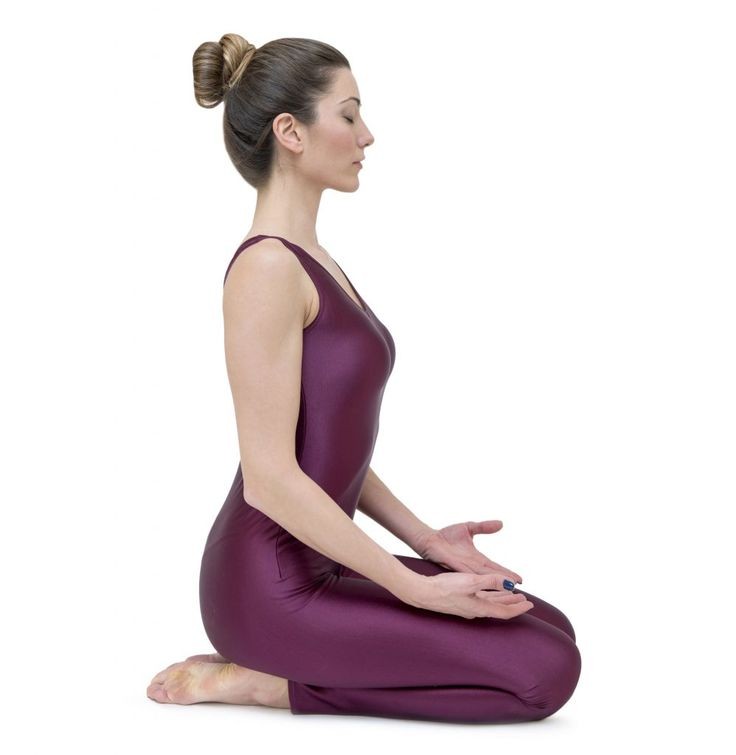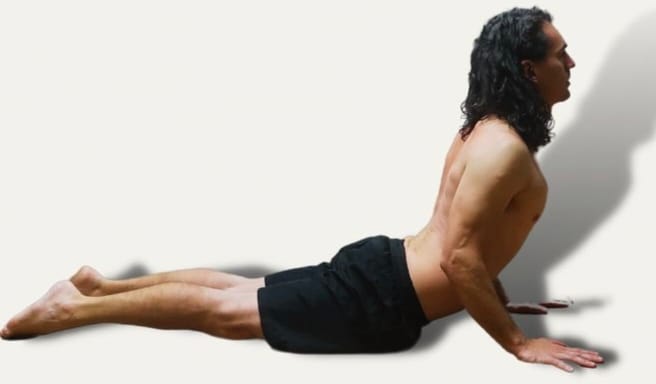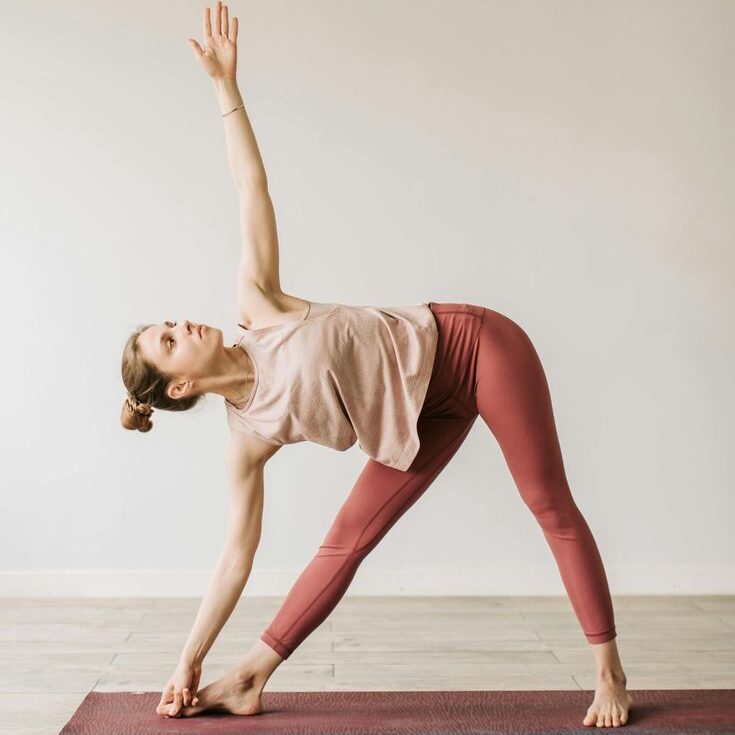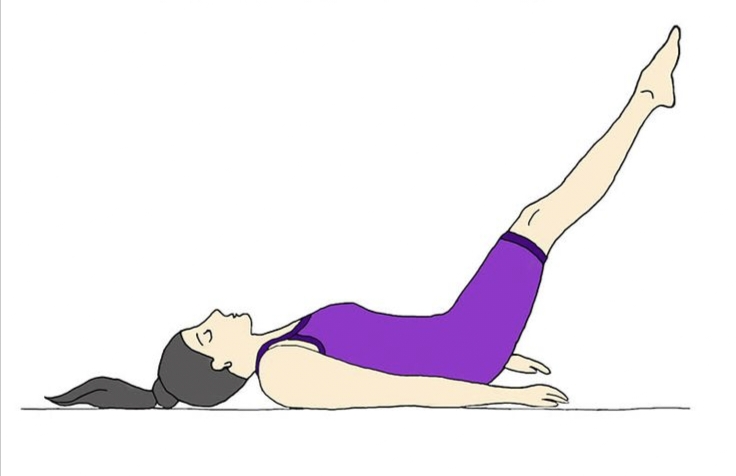🌿 Yoga for Hernia and Gastric Problems: Find Relief with Natural Solutions
April 29, 2025 | by paruli6722@gmail.com

In today’s fast-paced world, digestive issues like hernia and gastric problems are becoming increasingly common. But don’t worry — nature has provided us with a gentle yet powerful solution: Yoga for Hernia and Gastric Problems! 🧘♀️✨
In this article, you will learn how simple yoga poses and breathing techniques can help heal your gut naturally and prevent further complications.
🤔 What Causes Hernia and Gastric Problems?
Understanding the root causes of hernia and gastric problems is essential for proper treatment and prevention. These conditions develop due to a combination of physical strain, lifestyle habits, and internal body weaknesses.
Here’s a detailed breakdown:
➡️ Causes of Hernia
A hernia occurs when an internal organ, typically part of the intestine, pushes through a weak spot in the abdominal wall.
Common causes include:
- Weak abdominal muscles: Often due to aging, lack of exercise, or injury.
- Heavy lifting: Lifting heavy weights without proper technique or core support strains the abdominal wall.
- Chronic coughing or sneezing: Persistent pressure from coughing or allergies can weaken the muscles.
- Obesity: Excess weight increases pressure inside the abdomen, promoting hernia development.
- Constipation and straining: Excessive straining during bowel movements puts stress on the abdominal area.
- Pregnancy: Natural stretching of abdominal muscles during pregnancy can create weak spots.
➡️ Causes of Gastric Problems
Gastric problems refer to issues like indigestion, bloating, gas, acidity, and heartburn.
The main reasons are:
Excessive consumption of processed foods: Foods loaded with preservatives, sugar, and trans fats burden the digestive system.
Unhealthy eating habits: Irregular meals, overeating, and consuming junk food.
Lack of physical activity: A sedentary lifestyle slows down digestion, leading to gas buildup.
Stress and anxiety: Emotional stress disrupts digestive functions and increases stomach acid production.
Poor hydration: Not drinking enough water affects digestion and causes constipation.
Food intolerances: Some people react badly to foods like dairy, gluten, or high-fat meals.
Yoga for Hernia and Gastric Problems works directly on strengthening muscles, improving digestion, and relaxing your internal organs. 🌟
🧘♀️ How Does Yoga for Hernia and Gastric Problems Work?
Yoga for Hernia and Gastric Problems is a natural and holistic approach that focuses on strengthening, healing, and balancing the body from within. Instead of just treating the symptoms, yoga works on the root causes, offering long-term relief and prevention.
Here’s how it helps:
🔹 Strengthens Abdominal Muscles
Specific yoga poses target the core and abdominal region, making muscles stronger and reducing the chances of organs pushing through weak spots — the main cause of hernias.
🔹 Improves Digestion and Reduces Gas
Gentle twisting, bending, and stretching postures stimulate the digestive organs, improving bowel movements, reducing acidity, and releasing trapped gas.
🔹 Enhances Blood Circulation
Yoga boosts blood flow to the abdominal region, ensuring better nourishment and faster healing of weakened tissues that may lead to hernia or gastric distress.
🔹 Relieves Stress and Tension
Stress and anxiety worsen gastric issues. Breathing techniques (Pranayama) in Yoga for Hernia and Gastric Problems calm the nervous system, stabilize digestion, and reduce inflammation naturally.
🔹 Supports Posture and Core Stability
Bad posture often contributes to hernias and gastric reflux. Yoga corrects body alignment, strengthens the spine, and improves core balance, preventing pressure buildup in the abdominal area.
🧘♂️ With consistent practice, Yoga for Hernia and Gastric Problems not only relieves discomfort but also strengthens your body to prevent future health issues naturally.
⚠️ Precautions While Practicing Yoga for Hernia and Gastric Problems
While Yoga for Hernia and Gastric Problems offers amazing benefits, it’s important to practice with care. Wrong techniques or overexertion can worsen the condition instead of healing it. 🛑
Here are the key precautions you must follow:
🔸 Avoid Intense Core Exercises
Stay away from heavy abdominal workouts like crunches, planks, or aggressive twisting movements. These can strain the weakened area and aggravate a hernia.
🔸 Practice Gentle and Slow Movements
Always move slowly and mindfully. Jerky or sudden movements can increase internal pressure and risk injury. Yoga for Hernia and Gastric Problems should be calming, not stressful.
🔸 Never Hold Breath Forcefully
Avoid practices that involve breath retention (Kumbhaka) unless guided by an expert. Holding your breath can increase intra-abdominal pressure, worsening hernia symptoms.
🔸 Focus on Healing, Not Straining
Yoga is not about pushing your limits. Choose poses that are easy, supportive, and restorative. If any posture causes discomfort or sharp pain, stop immediately.
🔸 Use Props for Support
Use cushions, yoga blocks, or rolled blankets to support your body during certain poses. It will reduce strain and make postures safer.
🔸 Consult a Yoga Therapist or Doctor
Before starting Yoga for Hernia and Gastric Problems, it’s highly recommended to get approval from your healthcare provider, especially if your hernia is large or painful.
🧘♂️ Practicing mindfully and patiently ensures that Yoga for Hernia and Gastric Problems becomes a safe and powerful tool for natural healing.
📋 Do’s and Don’ts While Practicing Yoga for Hernia and Gastric Problems
| ✅ Do’s | ❌ Don’ts |
|---|---|
| Practice gentle, slow movements 🧘♀️ | Avoid heavy core exercises like crunches 🚫 |
| Focus on breathing naturally 🌬️ | Don’t hold your breath forcefully 🔴 |
| Use props like cushions and blocks for support 🧺 | Avoid sudden, jerky movements ⚡ |
| Listen to your body — stop if any discomfort occurs 🚦 | Don’t overstretch or push beyond your limits ❗ |
| Consult a certified yoga therapist or doctor 👩⚕️ | Never self-diagnose or practice risky postures 🛑 |
| Perform yoga on an empty or light stomach 🍃 | Don’t eat heavy meals right before yoga 🍔 |
🧘♂️ Practicing Yoga for Hernia and Gastric Problems safely will maximize healing, strengthen your body, and prevent future complications naturally!
🥗 Importance of Diet Along with Yoga for Hernia and Gastric Problems
Practicing Yoga for Hernia and Gastric Problems is highly effective, but to achieve complete healing and long-lasting relief, a proper diet is equally important. 🥗✨
Here’s why diet plays a crucial role:
🥦 Helps in Reducing Internal Pressure
Eating light, fiber-rich meals prevents constipation and straining, which are major contributors to hernia and gastric issues. Smooth digestion reduces pressure on abdominal muscles.
🥛 Balances Stomach Acidity
Choosing alkaline foods like vegetables, fruits, and whole grains helps in neutralizing excess stomach acid, easing gastric problems like heartburn, bloating, and acidity.
💧 Keeps Digestive System Hydrated
Drinking adequate water supports smoother digestion, prevents gas buildup, and aids in easy bowel movements, reducing pressure inside the abdomen.
🍽️ Promotes Healing and Strengthening
A nutrient-rich diet with enough proteins, vitamins, and minerals supports tissue repair and strengthens the abdominal wall, helping in faster recovery from hernia.
🌿 Prevents Recurrence of Problems
Following a clean and healthy diet along with regular Yoga for Hernia and Gastric Problems minimizes the chances of issues recurring in the future.
🥗 Diet Tips for Better Results with Yoga for Hernia and Gastric Problems
- ✅ Eat small, frequent meals instead of heavy meals.
- ✅ Include high-fiber foods: oats, fruits, vegetables, legumes.
- ✅ Avoid spicy, fried, and overly processed foods.
- ✅ Drink lukewarm water throughout the day.
- ✅ Consume probiotics like yogurt to boost gut health.
- ✅ Limit caffeine, alcohol, and carbonated drinks.
🌟 A mindful combination of a balanced diet and Yoga for Hernia and Gastric Problems creates the perfect path toward a healthier, stronger digestive system and overall wellness!
🌬️ Major Causes of Gastric Problems
Gastric problems like bloating, acidity, gas, and indigestion are increasingly common today. Understanding the major causes of gastric problems helps in preventing and managing them effectively. 🌿
Here’s a detailed look:
🍔 Unhealthy Eating Habits
- Overeating or eating too fast overloads the digestive system.
- Irregular meal timings disturb stomach acid production.
- Consuming junk, fried, and processed foods increases gas formation.
☕ Excessive Caffeine and Carbonated Drinks
- Beverages like coffee, sodas, and energy drinks stimulate excess acid production and weaken the lower esophageal sphincter, leading to acidity and reflux.
🛋️ Sedentary Lifestyle
- Lack of physical activity slows down digestion, causing bloating, constipation, and gas buildup in the intestines.
😟 Stress and Anxiety
- Emotional stress disrupts the brain-gut connection, altering digestion speed and increasing acid production, which triggers gastric discomfort.
🚬 Smoking and Alcohol Consumption
- Both smoking and alcohol irritate the stomach lining and relax the muscles that prevent acid reflux, worsening gastric problems.
🍽️ Overeating at Night
- Eating heavy meals late in the evening delays digestion and promotes acid reflux while lying down.
❌ Food Intolerances and Allergies
- Some individuals have intolerances to foods like dairy, gluten, or high-fat meals, which can lead to excessive gas and bloating.
🧘♀️ Practicing Yoga for Hernia and Gastric Problems along with correcting these causes through lifestyle changes can dramatically improve your digestive health naturally!
🌱 Lifestyle Changes Along with Yoga for Hernia and Gastric Problems
Practicing Yoga for Hernia and Gastric Problems becomes even more powerful when supported by healthy lifestyle habits. Small but consistent changes can help you heal faster, prevent recurrence, and improve your overall digestive wellness. 🌼
Here’s what you need to focus on:
🥗 Eat Light and Healthy Meals
- Choose small, frequent meals instead of heavy portions.
- Focus on fresh fruits, vegetables, and whole grains.
- Avoid spicy, oily, and junk foods that irritate digestion.
🚶 Stay Physically Active
- Gentle daily exercises like walking, stretching, and yoga postures keep digestion active and prevent gas buildup.
- Avoid sitting for long periods after meals.
🛏️ Maintain Proper Sleep Routine
- Sleep early and wake up early.
- Ensure at least 7-8 hours of restful sleep to allow proper digestive function.
🧘 Manage Stress with Relaxation Techniques
- Practice meditation, deep breathing (Pranayama), and mindfulness daily to reduce stress-related gastric issues.
🚰 Stay Hydrated
- Drink plenty of lukewarm water throughout the day.
- Start your morning with a glass of warm water to stimulate digestion.
🪑 Maintain Good Posture
- Sit upright while eating and after meals.
- Poor posture puts pressure on the abdomen and can worsen hernia and gastric problems.
❌ Avoid Smoking and Limit Alcohol
- Smoking and drinking weaken the digestive tract and must be minimized for faster healing.
🌟 By combining mindful lifestyle habits with Yoga for Hernia and Gastric Problems, you create a natural, powerful foundation for long-term health and wellness!
🧘♂️ Top Yoga Poses for Hernia and Gastric Problems
Let’s look at the most effective asanas that can be easily practiced daily:
1️⃣ Pawanmuktasana – Best Yoga for Hernia and Gastric Problems 🌀

Pawanmuktasana, also known as the Wind-Relieving Pose, is one of the most effective yoga asanas for improving digestion, releasing trapped gas, and strengthening abdominal muscles. It’s a cornerstone of Yoga for Hernia and Gastric Problems. 🌿
✨ How to Perform Pawanmuktasana Step-by-Step
- 🧘♀️ Lie down flat on your back on a yoga mat.
- 🦵 Inhale deeply and as you exhale, bend your right knee and bring it toward your chest.
- 🤗 Hug your knee tightly with both hands, pressing it gently against your stomach.
- 🌬️ Lift your head and chest slightly off the floor and try to touch your chin to your knee.
- 🕰️ Hold this position for 20-30 seconds while breathing normally.
- 🔄 Slowly lower your head and leg back to the floor.
- 🔁 Repeat the same with the left leg, then with both legs together.
🌟 Benefits of Pawanmuktasana for Hernia and Gastric Problems
- 🚫 Relieves gas, bloating, and constipation naturally.
- 💪 Strengthens the abdominal muscles and improves core stability.
- 🧘♂️ Reduces pressure on the intestines and digestive organs.
- 🔄 Enhances blood flow to the digestive system, boosting metabolism.
- 🧠 Helps calm the mind and reduce digestive stress.
⚠️ Precautions While Practicing Pawanmuktasana
- Avoid if you have a recent abdominal surgery or severe hernia.
- Perform this pose slowly and gently without applying excess pressure.
- Always practice under guidance if you are a beginner or have major health issues.
🌿 Regular practice of Pawanmuktasana in Yoga for Hernia and Gastric Problems can naturally ease digestive discomfort and strengthen your body’s internal support system!
Vajrasana in Yoga for Hernia and Gastric Problems – The Post-Meal Yoga Pose 🧎✨

Vajrasana, also known as the Diamond Pose 💎 or Thunderbolt Pose ⚡, is a simple yet powerful yoga posture. It’s often practiced after meals 🍽️ to promote digestion and alleviate gastric problems. For those dealing with hernia or gastric issues, Vajrasana can be a therapeutic and effective pose. Here’s a friendly, sco-friendly guide to understanding the benefits of Vajrasana for hernia and gastric problems.
Why Vajrasana is Beneficial for Hernia and Gastric Problems
- Aids Digestion 🍴: Vajrasana helps improve blood circulation to the digestive organs. When practiced after meals, this pose helps food settle in the stomach and promotes smooth digestion, reducing bloating, gas, and indigestion 🌱.
- Relieves Gastric Issues 🌡️: The gentle pressure on the abdomen while sitting in Vajrasana stimulates the intestines, helping relieve gastric discomfort like acid reflux, bloating, and indigestion 💨.
- Supports Hernia Relief 🛑: Vajrasana can help reduce pressure on the abdominal area, especially for people with a hernia. It aids in realigning the organs, reducing unnecessary strain that could worsen hernia conditions 🤕.
- Promotes Deep Breathing 🌬️: While in Vajrasana, deep breathing becomes easier. This helps relax the digestive system and manage stress, a common factor in digestive issues 🌟.
How to Practice Vajrasana Safely
- Start by kneeling on the floor 🧘♂️: Kneel with your knees together and feet flat on the floor. Keep your thighs perpendicular to the floor.
- Sit on your heels 💺: Gently lower your hips to sit on your heels. Your legs should be in contact with the ground, and your back should remain straight.
- Align your body 💪: Keep your chest open and your shoulders relaxed. Your head should be aligned with your spine, and your hands can rest on your thighs with your palms facing down.
- Focus on Breathing 🌬️: Close your eyes and take slow, deep breaths. Expand your belly as you inhale, and draw it in as you exhale. This helps massage your digestive organs and promotes relaxation.
- Hold for a few minutes ⏱️: Sit in Vajrasana for 5-10 minutes after meals to help your body relax and aid digestion. Avoid sitting for too long if you feel any discomfort.
Precautions for Vajrasana Practice
- Avoid if you have knee or ankle pain 🚫: If you have knee or ankle issues, it may be uncomfortable to practice Vajrasana. Try using a cushion under your knees for support 🛋️.
- Practice on an empty stomach or after meals 🥗: Vajrasana should ideally be practiced on an empty stomach or after eating. Avoid practicing immediately after heavy meals.
- Gradual Practice ⏳: If you’re new to Vajrasana, start with shorter durations and gradually increase the time as your body gets used to the pose.
Conclusion 🎉
Vajrasana is a simple yet effective yoga pose that can be an excellent ally for those suffering from hernia and gastric issues. By improving digestion, reducing bloating, and relieving gastric discomfort, it helps manage these conditions naturally and gently 🌿. Incorporating Vajrasana into your daily routine, especially after meals, can provide long-term benefits for digestive health 💪. Always practice with mindfulness and listen to your body for the best results 🧘♀️✨.
Bhujangasana in Yoga for Hernia and Gastric Problems – Strengthen Abdominal Muscles 🐍💪

Bhujangasana, also known as the Cobra Pose 🐍, is a powerful yoga posture that targets the spine, chest, and abdominal muscles. It’s a wonderful pose for strengthening the core and improving digestion. For people dealing with hernia or gastric issues, Bhujangasana can be a helpful addition to your yoga practice. Here’s how this posture can benefit you and how to do it safely.
Why Bhujangasana is Beneficial for Hernia and Gastric Problems
- Strengthens Abdominal Muscles 💪: Bhujangasana helps tone and strengthen the abdominal muscles, which are important for supporting the abdominal organs. For those with a hernia, this strengthening action can provide better support for the area, reducing discomfort and strain 🌿.
- Improves Digestion 🍽️: The stretching and contraction of the abdominal region in Bhujangasana stimulates the digestive organs, improving the process of digestion. This can help with bloating, indigestion, and constipation 🌱.
- Relieves Gastric Issues 💨: By opening up the chest and stretching the abdomen, Bhujangasana can relieve tension in the stomach and intestines. This helps to reduce acid reflux, gas, and bloating by encouraging better circulation to the digestive tract 🌟.
- Increases Flexibility of the Spine and Abdominal Region 🧘♂️: The backbend action of Bhujangasana promotes flexibility in the spine, allowing for improved posture and relieving tension in the lower back. This can be particularly helpful for those dealing with abdominal discomfort from a hernia or gastric issues.
How to Practice Bhujangasana Safely
- Start by lying on your stomach 🛏️: Lie flat on your stomach with your legs extended behind you and your feet together. Place your palms flat on the floor under your shoulders, with your elbows pointing backward.
- Engage your legs and pelvis 🔒: Press the tops of your feet into the ground and engage your leg muscles. Keep your elbows slightly bent and close to your body.
- Lift your chest gently 🐍: Slowly begin to lift your chest off the ground by pressing into your palms, using your arms to support the lift while maintaining a relaxed lower back. Your elbows should be slightly bent, and your shoulders should remain relaxed away from your ears.
- Open the chest and look forward 👀: As you lift, open your chest wide, drawing your shoulder blades toward each other. Keep your chest open and gaze forward. Focus on elongating your spine and feeling the stretch in the abdominal area.
- Hold the position for a few breaths 🌬️: Stay in the pose for 10-15 seconds, breathing deeply. Avoid straining your back or abdomen, and only lift as much as feels comfortable for you.
- Come back down slowly 🧘♀️: To release the pose, lower your chest back down to the mat gently, maintaining control over your movement. Rest for a few breaths before repeating.
Precautions for Bhujangasana Practice
Practice on an empty stomach 🍽️: Bhujangasana should be practiced on an empty stomach or after waiting at least 2-3 hours after a meal.
Avoid if you have severe hernia or back pain 🚫: If you have a severe hernia or significant back issues, avoid this pose or consult with a healthcare provider before attempting it.
Avoid overstraining 🌟: Be cautious not to overextend your back. Lift slowly and gently, respecting your body’s limits. If you feel any discomfort, stop immediately.
Trikonasana in Yoga for Hernia and Gastric Problems – Yoga to Ease Gas and Bloating 🔺

Trikonasana, also known as the Triangle Pose 🔺, is a powerful yoga posture that stretches and strengthens the entire body. This pose is particularly beneficial for easing gastric discomfort, including gas and bloating. For individuals dealing with hernia or other gastric issues, Trikonasana can provide gentle relief and support digestive health. Here’s how this pose can help and how to practice it safely.
Why Trikonasana is Beneficial for Hernia and Gastric Problems
- Eases Gas and Bloating 💨: Trikonasana gently stretches the sides of the body and massages the abdominal area. This action can help relieve trapped gas in the stomach and intestines, reducing bloating and promoting better digestion 🌱.
- Stimulates Digestive Organs 🧠: The twist and stretch of Trikonasana help stimulate the digestive organs, including the stomach and intestines, improving their functioning. This can help alleviate issues like indigestion and constipation 🌿.
- Supports Hernia Relief 💪: Trikonasana, when practiced with mindfulness and care, can help reduce pressure on the abdominal area, which may be beneficial for those with a hernia. The stretch helps open up the chest and hips, while the gentle twisting motion helps to realign the organs, reducing strain 🌸.
- Improves Blood Circulation 🩸: The lateral stretch of the body in Trikonasana improves blood circulation to the abdominal region. Better circulation can enhance the functioning of the digestive system and help manage gastric discomfort more effectively 💖.
How to Practice Trikonasana Safely
- Stand with your feet wide apart 🌍: Begin by standing with your feet about 3-4 feet apart, with your arms extended parallel to the floor. Make sure your toes are pointing forward.
- Turn your right foot out and left foot slightly in 🔄: Rotate your right foot 90 degrees outward, and turn your left foot slightly inward, keeping both feet firmly planted on the ground. Align your body so your right knee is directly over your ankle.
- Reach your right hand to the right side 🌿: Inhale and extend your right hand toward the right side. As you exhale, begin to lower your right hand toward your right ankle, shin, or the floor, while keeping your left hand pointing straight up toward the ceiling.
- Engage your core and stretch both sides 🧘♂️: Make sure to engage your abdominal muscles as you stretch. Keep your body long and avoid collapsing your chest. Your gaze can be directed upward at your left hand, or you can look straight ahead if that feels more comfortable for your neck.
- Hold the position for 5-10 breaths 🌬️: Stay in the pose for 5-10 breaths, focusing on elongating your body with each inhale and deepening the stretch with each exhale. Feel the gentle stretch in the abdominal area, which can help ease bloating and gas.
- Return to standing and switch sides 🔄: To release the pose, inhale and come back to standing with your arms extended. Repeat the pose on the opposite side, ensuring that both sides of the body get an equal stretch.
Precautions for Trikonasana Practice
- Avoid if you have severe hernia or back pain 🚫: If you have a severe hernia or back issues, practice Trikonasana with caution. If needed, consult with a healthcare provider before attempting this pose.
- Keep the body aligned 🌟: Make sure your body stays aligned during the stretch, especially your knees and hips, to avoid any unnecessary strain.
- Don’t force the stretch 🔑: Only go as deep into the pose as feels comfortable. Overextending can lead to discomfort, so always listen to your body.
- Practice on an empty stomach 🍽️: Trikonasana is best practiced on an empty stomach or after waiting at least 2-3 hours after a meal to avoid any discomfort.
Uttanpadasana in Yoga for Hernia and Gastric Problems – Lose Belly Fat and Gas 💪

Uttanpadasana, also known as the Raised Leg Pose, is a beneficial yoga posture that targets the abdominal muscles and improves digestive health. This pose is particularly effective for individuals dealing with hernia and gastric problems, as it helps reduce abdominal discomfort, ease gas, and promote better digestion. Here’s how Uttanpadasana can benefit you and how to practice it safely.
Why Uttanpadasana is Beneficial for Hernia and Gastric Problems
- Reduces Belly Fat and Strengthens Core 💪: Uttanpadasana primarily targets the lower abdominal area. Regular practice of this pose can help tone and strengthen the abdominal muscles, which provides better support for the organs and can aid in reducing belly fat. A stronger core helps alleviate strain caused by hernia and gastric issues.
- Improves Digestion and Relieves Gas 💨: By engaging the abdominal muscles and stimulating the digestive organs, Uttanpadasana can help improve the digestion process. It promotes better circulation to the stomach and intestines, easing the discomfort of bloating and gas.
- Relieves Pressure on the Abdomen 🛑: Uttanpadasana helps to release pressure in the abdominal area by stretching and strengthening the muscles, making it beneficial for people with hernia or those experiencing abdominal discomfort from gastric issues. It encourages proper alignment of the organs and reduces tension in the abdomen.
- Promotes Blood Circulation to the Abdomen ❤️: The elevated leg position increases blood flow to the abdominal area, which can aid in the natural process of digestion. Improved circulation ensures that the digestive organs receive the nutrients and oxygen they need to function effectively.
How to Practice Uttanpadasana Safely
- Lie on your back 🛏️: Begin by lying flat on your back with your legs extended and your arms placed at your sides, palms facing down. Keep your head, neck, and spine aligned.
- Engage your core 🔒: Engage your abdominal muscles to prepare for the leg lift. Make sure your lower back stays pressed to the floor to avoid unnecessary strain on your spine.
- Lift your legs up 💫: Inhale deeply, and as you exhale, slowly lift both legs toward the ceiling. Keep your legs straight and together. Avoid arching your lower back or using momentum to lift your legs.
- Hold the position 🧘♀️: Once your legs are elevated, hold the position for 10-20 seconds, breathing deeply and evenly. Focus on keeping your abdominal muscles engaged to maintain balance.
- Lower your legs slowly 🦵: Inhale and slowly lower your legs back down, keeping them straight. Avoid letting your legs touch the ground too suddenly. If you find it difficult to hold your legs up, lower them a few inches instead of keeping them fully raised.
- Repeat the pose 🔁: Repeat the process for 5-10 rounds, depending on your comfort level. Always listen to your body and avoid straining your muscles.
Precautions for Uttanpadasana Practice
- Avoid if you have severe back pain 🚫: If you have a history of back pain or hernia, practice Uttanpadasana with caution. Consider using a support cushion under your lower back if needed.
- Don’t force the stretch 🌟: Only raise your legs as much as you can without straining your lower back. If you feel any discomfort, lower your legs to a more comfortable position.
- Practice on an empty stomach 🍽️: This pose is best done on an empty stomach or after waiting at least 2-3 hours after a meal to avoid any discomfort.
🌬️ Top Pranayama for Hernia and Gastric Problems
Breathing exercises are crucial! Here are the best ones:
🌬️ Anulom Vilom Pranayama – Balance and Calmness

When dealing with hernia and gastric problems, calming the mind and balancing the body’s internal systems is essential. Anulom Vilom Pranayama, also known as Alternate Nostril Breathing, is a highly effective breathing exercise for achieving balance and promoting digestive health. This gentle, rhythmic breathing technique can help ease gastric discomfort, reduce bloating, and bring a sense of peace to the body and mind. Let’s explore its amazing benefits and how to practice it safely!
Why Anulom Vilom is Beneficial for Hernia and Gastric Problems
- Balances the Digestive System ⚖️: Anulom Vilom helps regulate the nervous system, which in turn improves the functioning of the digestive organs. A balanced nervous system leads to better digestion, reduced gas, and minimized bloating 🌿.
- Reduces Stress and Tension 😌: Stress often aggravates gastric issues like acidity, indigestion, and hernia pain. By promoting relaxation, Anulom Vilom reduces stress hormones, calming the digestive tract and easing abdominal discomfort 🧘♀️.
- Improves Oxygen Supply to Organs 🌬️: This pranayama technique enhances the oxygen flow throughout the body, including the stomach and intestines. Better oxygenation supports healthier digestion and helps repair damaged tissues.
- Cleanses Energy Channels (Nadis) ✨: In yogic tradition, Anulom Vilom is said to cleanse the nadis (energy pathways), allowing vital energy (prana) to flow freely. This energetic balance supports physical healing, including issues related to hernia and digestive problems.
How to Practice Anulom Vilom Pranayama
- Sit in a comfortable position 🧎♂️: Choose a quiet place. Sit cross-legged (in Sukhasana or Padmasana) with a straight spine and relaxed shoulders.
- Make the Vishnu Mudra 🤲: Use your right hand. Fold the index and middle fingers inward, leaving the thumb, ring finger, and little finger extended.
- Close your right nostril 👃: Gently press your right nostril with your thumb and inhale deeply and slowly through your left nostril.
- Switch and exhale 🌬️: Close your left nostril with your ring finger, release the thumb from your right nostril, and exhale slowly and completely through the right nostril.
- Inhale through the right nostril ➡️: With your left nostril still closed, inhale deeply through your right nostril.
- Switch and exhale through the left nostril ⬅️: Close the right nostril again and exhale through the left nostril. 👉 This completes one round.
- Practice 5-10 rounds 🌀: Repeat the process slowly and mindfully for 5 to 10 minutes daily.
Precautions for Anulom Vilom Practice
- Practice on an empty stomach 🍽️: It’s best to perform pranayama early in the morning or at least 3-4 hours after a meal.
- Go slow and steady 🧘♂️: Avoid rushing your breath. Maintain a smooth and gentle rhythm.
- Avoid forceful breathing ❌: If you feel dizzy or uncomfortable, stop and breathe normally.
- Consult a doctor if needed 🩺: If you have severe hernia symptoms or respiratory issues, talk to a healthcare professional before starting pranayama.
🔥 Kapalbhati Pranayama – Detoxify Your Gut

If you’re dealing with hernia and gastric problems, practicing Kapalbhati Pranayama can be a game-changer for your digestive health. Known as the “Shining Skull Breathing Technique,” Kapalbhati is a dynamic and energizing breathing exercise that helps detoxify your gut, clear out digestive blockages, and boost your overall vitality. Let’s dive into how this powerful practice works and how to do it safely! 🚀
Why Kapalbhati is Beneficial for Hernia and Gastric Problems
- Detoxifies the Digestive System 🧹: Kapalbhati generates internal heat 🔥 and creates strong abdominal contractions, which help flush out toxins from the stomach and intestines. This leads to a cleaner and healthier gut.
- Boosts Digestive Fire (Agni) 🔥: In yoga, strong digestive fire is essential for good health. Kapalbhati ignites the internal digestive fire, improving metabolism and helping to break down food more efficiently.
- Relieves Gas, Bloating, and Indigestion 💨: The forceful exhalations massage the digestive organs, improving blood circulation and relieving common gastric problems like gas, acidity, and bloating.
- Strengthens Abdominal Muscles 💪: The rhythmic pumping motion strengthens the core muscles, offering support to the abdominal wall — a big help for those managing hernia symptoms.
- Cleanses the Mind and Body 🧘♂️: Along with physical detox, Kapalbhati clears mental fog, improves focus, and energizes your entire system, making you feel lighter and more vibrant! 🌟
How to Practice Kapalbhati Pranayama
- Sit Comfortably 🧎: Sit in a meditative posture like Sukhasana, Padmasana, or even on a chair if needed. Keep your spine straight and shoulders relaxed.
- Focus on Forceful Exhalation 💨: Take a deep inhale, and then start forcefully exhaling through your nose by contracting your abdominal muscles. Don’t focus much on inhalation — it will happen automatically between exhalations.
- Maintain a Steady Rhythm 🎶: Perform quick, short bursts of exhalation, aiming for 1-2 exhalations per second.
- Complete One Round 🔁: Do 30 rapid exhalations, then relax and breathe normally for a few moments. This is one round.
- Practice 3-5 Rounds 🌀: Gradually work up to 3-5 rounds, based on your capacity and comfort.
Precautions for Kapalbhati Practice
Avoid if you have heart disease, high blood pressure, or recent surgery 🛑: Always take professional advice if you have major health conditions
Avoid if you have severe hernia 🚫: If you have a serious or painful hernia, consult a doctor before practicing Kapalbhati.
Start slow 🌱: Beginners should start with fewer exhalations and gradually increase as the abdominal muscles get stronger.
Practice on an empty stomach 🍽️: Always perform Kapalbhati in the morning or at least 3-4 hours after eating.
🐝 Bhramari Pranayama – Relax Your Gut and Mind

🐝If you are struggling with hernia and gastric problems, calming your nervous system is just as important as strengthening your body. Bhramari Pranayama, or Humming Bee Breath, is a beautiful, soothing practice that helps relax your mind, reduce stress, and ease digestive discomfort naturally. Its gentle vibrations create a healing effect on both the gut and the brain, promoting deep relaxation and better digestion 🌿.
Why Bhramari is Beneficial for Hernia and Gastric Problems
- Reduces Stress and Anxiety 😌: Stress is a major trigger for gastric problems like acidity, bloating, and indigestion. Bhramari’s humming sound calms the mind, lowers cortisol levels, and relaxes the nervous system, allowing the digestive system to function more efficiently 🌟.
- Eases Gastric Discomfort 💨: A calm and relaxed state directly improves gut health. By reducing mental agitation, Bhramari can help ease issues like gas, bloating, and abdominal cramps.
- Promotes Mind-Body Connection 🧘: The soft vibrations from humming create a soothing massage effect on the internal organs, especially the stomach and intestines, promoting better digestion and emotional well-being.
- Balances Blood Pressure and Heart Rate ❤️: A calm nervous system results in a stable heart rate and better circulation, indirectly aiding digestive processes and providing relief from discomfort related to hernia and gastric problems.
- Helps in Emotional Healing 🌈: Many digestive issues are linked with emotional stress. Bhramari creates a deep sense of inner peace, promoting both mental and gut healing.
How to Practice Bhramari Pranayama
- Sit Comfortably 🧎: Find a quiet space. Sit in Sukhasana, Padmasana, or even on a chair with a straight spine.
- Close Your Eyes Gently 👀: Relax your facial muscles and keep your lips lightly closed.
- Use Your Fingers for Ear Closure 🎧: Place your index fingers gently on the cartilage of your ears (not deep inside) to slightly close them. Some people prefer placing fingers lightly over the eyelids for extra calmness.
- Take a Deep Inhale 🌬️: Inhale deeply through the nose, filling your lungs completely.
- Exhale with a Humming Sound 🐝: While exhaling, make a low-pitched humming sound, like a bee buzzing. Feel the vibration in your throat, face, and head.
- Repeat for 5–10 Rounds 🔁: Continue this for 5-10 breaths, feeling more relaxed with each round.
Precautions for Bhramari Practice
- Practice on an empty stomach 🍽️: For best results, practice Bhramari early morning or 3-4 hours after a meal.
- Do not force the humming sound 🚫: It should be soft and natural, not loud or strained.
- Avoid if you have severe ear infections or extreme dizziness 🚫: In such cases, consult a healthcare professional first.
- Stay relaxed 🧘: Bhramari is all about relaxation. If you feel any discomfort, simply breathe normally and try again later.
🧘♂️ Final Words on Yoga for Hernia and Gastric Problems 🌸
Incorporating Yoga for Hernia and Gastric Problems into your daily life is a natural, safe, and holistic approach to heal and strengthen your digestive system.
Stay consistent, eat mindfully, breathe deeply, and witness your body transform from within! 🌟
RELATED POSTS
View all


